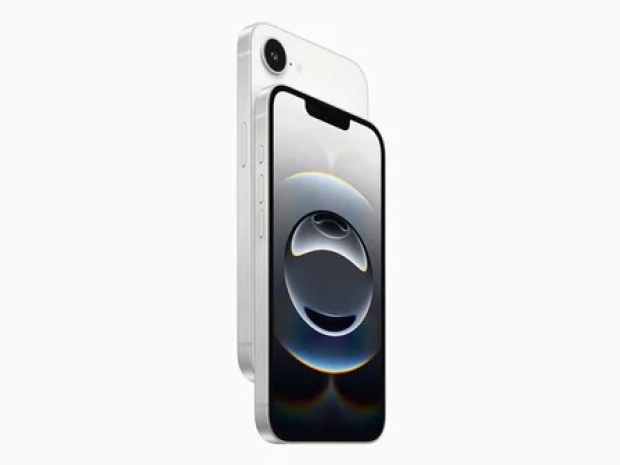The device packs an A18 chip, Face ID, a 6.1-inch OLED display, and a 48MP rear camera—impressive features until you realise Android devices at the same price point have been offering better specs for years.
Starting at an eye-watering £599 for the 128GB model in the UK, the iPhone 16e is yet another overpriced Job’s Mob product that recycles old tech while pretending to innovate. It looks suspiciously like the ageing iPhone 14, complete with an outdated notch and edge-to-edge OLED display. However, it ditches the home button and Touch ID for the much-maligned Face ID and adds the much mocked Apple Intelligence.
Job's Mob's attempt at selling "innovation" includes a multi-function action button, USB-C charging—something Android has had for nearly a decade—and satellite messaging, all wrapped up in a tired marketing spin.
The 48MP single-lens rear camera is revolutionary because it can zoom in two times without losing clarity—a feature that’s been standard on mid-range Android phones for years. And the battery life? Apple claims it’s the best of any 6.1-inch iPhone, which sounds great until you realise it’s just barely catching up to the competition.
Apple’s new C1 modem is the only real headline-grabber, but even that feels like a desperate attempt to break free from Qualcomm’s superior technology.
GlobalData Senior Technology Analyst Anisha Bhatia isn’t entirely convinced: “The launch of iPhone 16e with cellular modem ‘C1’ culminates years of research and more than $1 billion in acquisitions. The proprietary 5G modem will reduce Apple’s reliance on Qualcomm and integrate cellular connectivity within its larger device ecosystem. The move will improve device performance, design innovations, and cost savings.
“The £599 iPhone 16e serves as a testbed for Apple's modem, allowing the company to evaluate its performance at scale before potentially integrating it into the higher-end models. This move will enable Apple to gather extensive data and user feedback, addressing any potential issues before a wider rollout. But Qualcomm's modems are the current gold standard in the industry, and Apple’s transition to in-house modem technology will be gradual,” Bhatia said.
“Qualcomm modems are expected to remain in use in select Apple devices until at least 2027. As Qualcomm diversifies its focus to the automotive segment, PCs and IoT, the importance of the smartphone modem market to the company may wane, allowing Apple to carve out a new niche for itself,” she said.
“Apple's transition to self-designed modems is a calculated long-term play that may not immediately alter the user experience but could result in significant future benefits in terms of better processing efficiency, optimised battery design and tighter vertical integration of all Apple components,” Bhatia said.




